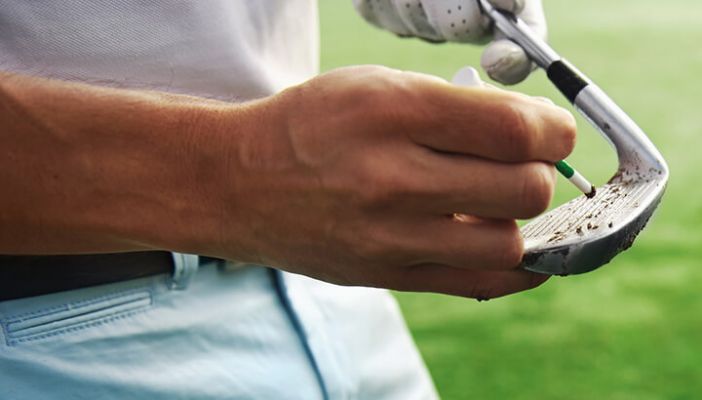Golf clubs, like cars and boats, are an asset that requires your attention to ensure long-term sustainability and effective usage. In perspective, golf clubs compared to other sporting equipment will cost considerably more initially. And, it will really be up to you to ensure that this investment is maintained and protected.
Clubs are to be loved and cared for until such time as the standard of your game demands an upgrade. There’s really no reason why clubs should be thrown away due to negligence or poor upkeep. Here are some pointers to ensure that your clubs go the distance:
Some golf clubs are different than others
A driver does not see too much sunlight and thus maintenance needs will be low. However, depending on the course or courses that are frequented, the base of your driver can take a pounding over time. Check the underside of the club for scuff marks, evidencing ground-hits off the tee.
As embarrassing as they might be, the more important question is how to maintain the driver. Where the club head is adjustable for loft or draw/fade, regularly tighten the applicable screws. If there are any concerns as to wear, show it to your club pro. Ask if you can change the head or else trade it in for another driver.
If the ball is being consistently struck from artificial turf at a driving range, then clubs will gradually build up a patina of green rubber on their base. Make sure this is removed as it can affect the surface contact of the club on the grass.
Maintaining a putter is different from other clubs. Your putter is the most cherished and used club in the bag, so make sure that it is in tip-top condition. Check the surface of the face for chips, scratches and general wear and tear. Check the grip for comfort and confidence.
Club covers
Protecting the big guns is common enough. Everyone appears to cover their driver and assorted fairway woods. Why is that? Over time the heads of those clubs knock together and are vulnerable to hairline damage. Don’t risk this unseen possibility. Keep all your woods protected from knocking against each other.
Bag towel
Slinging a towel on the outside of a golf bag is not for show. Watch the caddies on the television — once the club is back in their hands, it’s wiped and put away. Why does that happen and is it important?
Wet grass is easier to remove than dry. If the conditions are dewy or rainy then place a towel within easy reach. Put it on the handle of your cart, back of your pants or under the umbrella. Make sure that each club is rubbed down after play. If water is left on the club head, rust can eventually occur.
Sand, dirt and gravel can collect on the face of the club as well as encrust the grooves. Wiping it off as soon as the shot is played is the best long-term approach to iron care. The smallest of alterations to the face of the club could send the ball off on a slightly different trajectory. It could even be significant enough to cost you shots. The advice is: don’t leave it to chance. Wipe clubs down immediately after playing a shot. You’ll avoid the need to use a tee or other devices later on to scratch and scrape at the surface to restore the club face.
Grips
Many players step onto the course each week with grips that are not appropriate. The grip is the critical connection point between human and implement, so check the condition of all grips. Some wear away quicker than others, due to usage, grip strength or swing type.
Wedges and putters are the most utilized clubs on the course. They will show signs of wear and tear long before your driver. There is nothing more rewarding or reassuring than holding clubs with soft, sticky, new grips — suddenly any shot seems possible. If you feel that your entire set of clubs need replacing, first ask yourself if a grip replacement might bring renewed life rather than binning them too soon. Replacing grips is reasonably priced. And if your golf club is unable to do them, head down to your nearest PGA Tour Superstore.
Traveling clubs
There are many horror stories about traveling golf clubs. In a nutshell, invest in secure travel bags. These need not be state-of-the-art, but be wise about how the bag is packed. The most vulnerable club is the driver since it’s the longest club. Invest in a club protector called a stiff arm or strong arm (it looks like a mini umbrella) that sits atop all of your clubs. Or, pack your clothes, towel and shoes around the head of the bag. That way, there is minimal movement or impact risk in that area.
Everyday issues
After a long, wet day on the course, the instinct is to toss the clubs in the corner of the garage and search for a comforting drink. For all damp items, ensure there is air circulation. Be sure to hang out wet club covers. While mold and mildew are unlikely to affect your clubs, apart from grips, there is every chance that other items will be affected.
The take-home message is this: a little maintenance goes a long way. Revere your clubs and perhaps they will reward you with some outstanding form!
— N. Incoll
